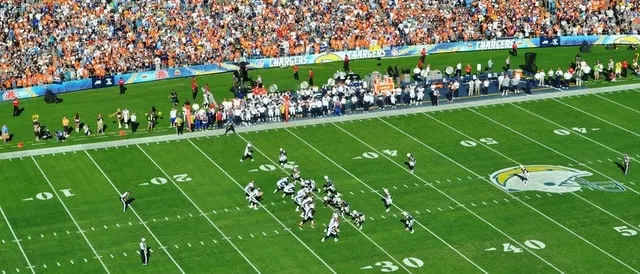
If you love American football, there’s a strong chance you belong to a fantasy football league. Maybe you even buy magazines to help you draft the right players in the league. But did you know the origins of this game?
Sports enthusiast Bill Winkenbach invented fantasy football in 1962. Bill used to simulate NFL games with a private league made up of his close friends.
In 1969, one of Bill’s friends, Andy Mousalimas, introduced the idea to members of his sports bar. In the next decade, fantasy football spread across America and later in Europe.
Fantasy football magazines took off in the ‘80s. Then came TV shows focused on the game and Internet websites created for the same reason.
Today, the best fantasy football magazines have millions of avid subscribers. And the reason has something to do with how the industry evolved over time. Learn more information below.
Regional to National Coverage
The earliest fantasy football magazines targeted small regions. For example, Andy Mousalimas introduced the idea to his friends and customers so that they could simulate Raiders’ games.
These regional leagues helped spread the word about fantasy football gradually. Over time, people began creating national leagues, some of which operated online entirely.
The first online fantasy football league launched in 1985. More online leagues appeared in the ‘90s and ‘00s. Of course, there are more online leagues today than print magazines.
Black and White Presentation
This might seem obvious to some, but the first generation of fantasy football magazines used black and white ink. Colored magazines existed at the time, but new startups focusing on small niches like fantasy football kept costs down by using black and white ink.
Truth be told, color was never a problem to the people trying out fantasy football for the first time in the ’80s. They were more concerned about whether a magazine could help them understand the rules of fantasy football.
They prioritized magazines that presented data and graphs neatly and clearly. That being said, the presence of color in a fantasy football magazine was always an added advantage.
Data Provision
Old-school fantasy football magazines lacked the amount of information modern magazines provide. In the early days, you sometimes had to read blocks of text to find valuable data about players.
These magazines also focused on a select number of players and teams. This meant your ability to create amazing NFL teams was limited by the small collection of data provided to you.
Luckily, things got better with time. Online magazines made it easy to access comprehensive player and team data in minutes. You could discover a player’s profile and performance records within a few searches.
Insight and Uniqueness
Fantasy football magazines have gotten better over time. The explanation is straightforward. There’s a lot more football data available to the public, these days.
In the ’70s and ’80s, most magazines were written by high school and college students. They loved the NFL. But they weren’t always experts in the game. When fantasy football became a national pastime, experts took over the industry.
Nowadays, the best-rated magazine curate football data after analyzing large volumes of information. Usually, only people with rich experience in the NFL provide their insights.
There are exceptions, of course. Anyone can start their own magazine or blog and share their insights. But if you read fantasy football columns written by experienced writers, you’ll usually gain valuable insights.
Magazines tend to focus on different topics, though. Some provide general tips. Others take you through a systematic process on how to win fantasy football tournaments.
Online Magazines and eBooks
Many of the most popular fantasy football magazines also feature websites to reach a wider audience. Some of them also sell their insights online as eBooks. Internet-based fantasy football groups are growing rapidly due to their convenience.
You don’t have to pay money to learn new draft strategies. You can read extensive guides at no cost. And if you join a fantasy football forum, you exchange ideas with people who also love the game.
With that in mind, fantasy football sites will probably not erase print magazines any time soon. The game has 60 million fans across the US and Canada. Some of them swear by print magazines.
- Impact of Emotionally Absent Fathers on Daughters - April 30, 2024
- Sagittarius Man & Gemini Woman Love and Sex Compatibility - January 31, 2024
- Taurus Ascendant Rising Personality Traits in Men (Guide) - January 31, 2024
